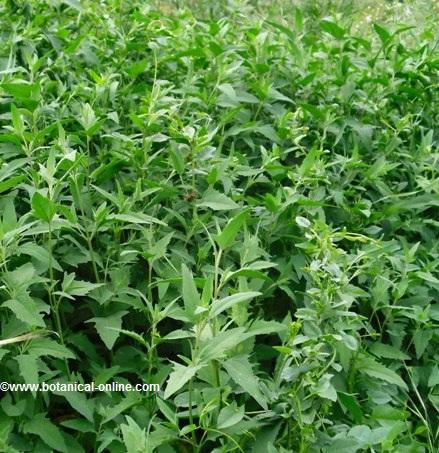Contents
How to grow ivy
Ivy culture: Environment and exposure

Ivy is an ideal climber for walls, fences, gates in the shade. It grows in shady places, so when grown outdoors, it must be planted in the shade to reach its maximum yield.
When grown in the sun, its growth is very limited and when too much light hits its leaves they lose their dark bright green and become lighter.
A different case is the variegated varieties, which are those whose leaves have bands or lighter spots. These types of ivy varieties are grown outside the full sun but in a well-lit place. If we cultivate them in the shade, the leaves, little by little, are losing the light tones and they become darker and evenly green.
Grown indoors, it is advisable for ivy to receive 3 to 4 hours of direct sunlight, although masked, better in the morning.
It also grows very well when grown in other places in the house with indirect light. It can also be grown on a window sill. In this case, the windows facing north are the most convenient.
Ivy: Temperature
Ivy does not like too warm environments. Although it can live in Mediterranean climates with very hot summers, it prefers a much cooler environment with temperatures no higher than 18 or 20 ºC.
The best climate is the temperate, with a daytime temperature between 20 and 22 ° C, and a night temperature between 10 and 13 ° C.
On the other hand, although it is very resistant to the low temperatures, it does not like frost. For this reason, it does not grow in their natural state in places where the greater part of the winter moves by temperatures below -2 ºC.
Ivy: Watering
Ivy does not like too steady watering. It will be enough to water it every 3 or 4 days in the hottest months and once a week in the colder months.
Excessive watering, especially in winter, usually causes blackening of leaves or stems by rotting and may also be responsible for the appearance of fungi. It is advisable, when the ivy is not growing, let the upper part of the soil dry between irrigation and irrigation.
On the other hand, a lack of irrigation, combined with a lack of environmental humidity, can produce dry, yellow or wrinkled leaves. Therefore, when grown as an indoor plant, it is convenient to spray from time to time, especially in very dry rooms with heating.
An interesting resource is to place some pots with water in the room so that the evaporation increases humidity.
Ivy: Soil, compost, pruning and care
Wild ivy thrives on any type of soil, provided it has a good drainage to prevent the onset of diseases.
If we have to plant an ivy in a pot, a very balanced soil is one that consists of a part of garden soil, another part of peat or forest mulch and a third of sand.
Ivy should not be fertilized during the first 3 to 4 months after planting. Later, and during the growing season, it is advisable to do it with a general fertilizer or green manure once every month. You can use foliar fertilizer, which will be applied with irrigation or directly on the soil.
Ivy: Pruning and production of new leaves
If ivy is allowed to grow freely, this usually presents a very frayed shape. In order to improve the appearance and give it a more compact form the ivy must perform a pruning regularly every half year.
On the other hand, the floriferous branches can be pricked occasionally to avoid flowers to be born. With this the energy of the plant will be destined to produce new green and tender leaves.
Ivy: Transplantation
Any ivy, planted in a pot or container, should be transplanted when symptoms present are too tight in the pot. This can be done at any time of the year.
Provide it a bigger pot that will allow new soil to be added for further root growth. In general terms, it is often necessary to transplant every two or three years.
Ivy: Plant reproduction
Ivy can be reproduced by two methods:
- Reproduction by cuttings in spring: To do this, cut a fragment of 10 – 20 cm of the end of a branch and introduce it into the soil.
Previously, the soil must be very moist, and moisture must be kept constantly. In addition, we will have to undo the earth with the hands to crumble it, and then to compact it slightly.
In this way, the cutting can take root and grow as a new plant. (Compact soil makes rooting difficult)
- Reproduction by layering: Another method widely used and much safer is the layering, which is done in summer. To do this, fold a twig in the middle of it so that this part touches the soil of the garden or the soil of another pot.
Cover the contact area well with earth and place a stone on top so that the branch does not rise. After a few days, it begins to produce roots.
When it is well rooted, cut the branch in front of the layer, so that we have a new plant.
*Related information: Ivy pests and diseases
![]() More information on ivy.
More information on ivy.








